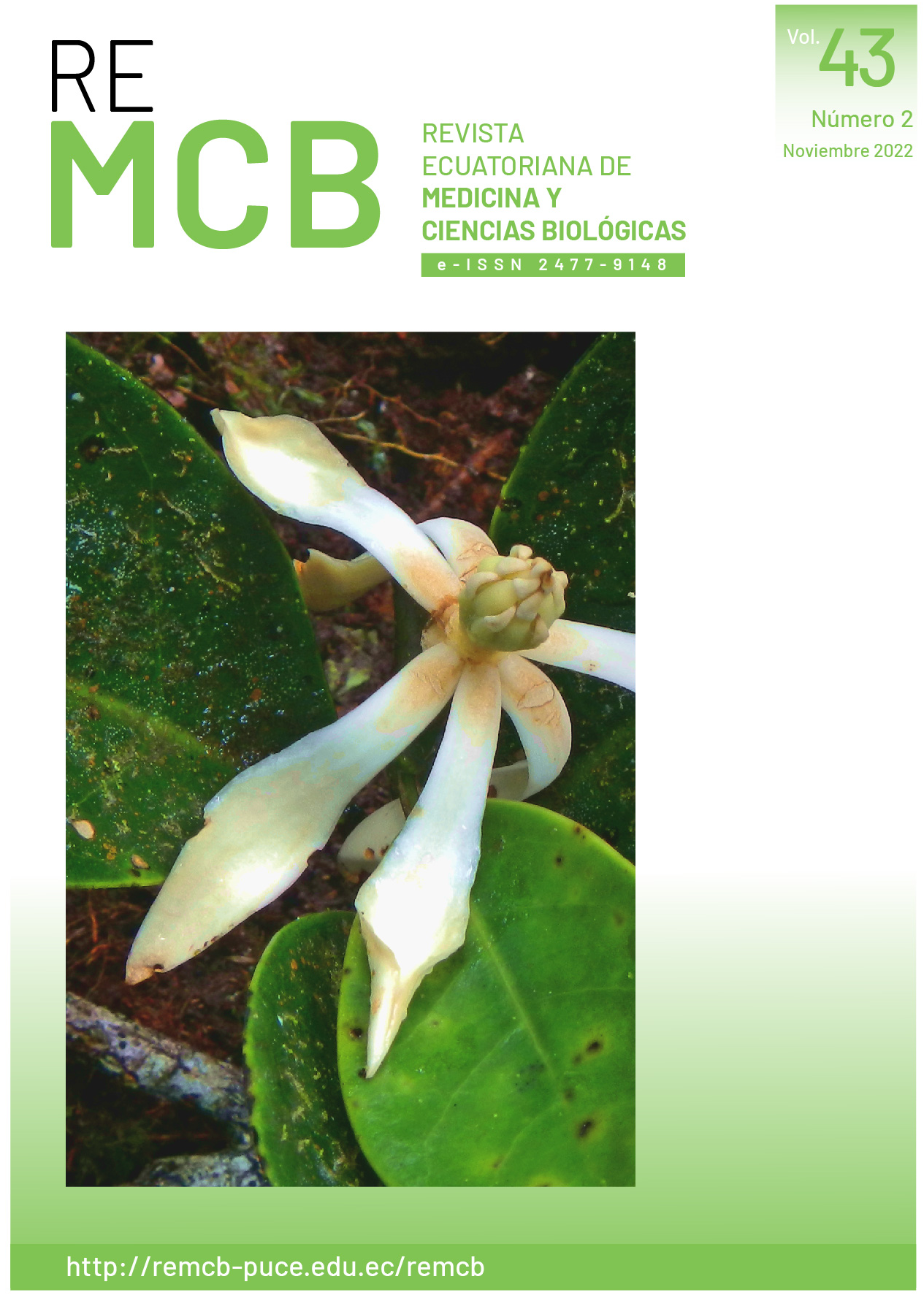Allelism for lethal genes in a natural population of Drosophila melanogaster from Mixcoac
Main Article Content
Abstract
A genetic test to distinguish whether two gene mutations occur in the same functional locus, as well as to establish their limits, is the so called complementation test widely used in microbial genetics, the same principle is used in agronomy and there is known as diallelic test; in population genetics and particular in Drosophila populations the term allelism is used and it is fundamentally used to determine genetic distances and persistence of genes in natural and experimental populations in which it is generally done for lethal genes in heterozygous condition. Thus we set out to do such an analysis for letal genes carried on the second chromosome of Drosophila melanogaster previously extracted from a natural population of the locality Mixcoac in Mexico City. The test consisted of crossing each strain carrying a lethal gene with all the others. A total of 50 strains were subjected to this manipulation thus corresponding to 1225 individual crosses. As a result, 23 allelic crosses were obtained, distributed in 18 singles and four double. Finally, the allelism rate determined was 1.88 % which does not differ much from the average reported by other researchers in similar studies.
Downloads
Article Details

This work is licensed under a Creative Commons Attribution-NonCommercial 4.0 International License.
References
Gabay-Laughnan, S., dchase, C., Ortega, V.M. and Zhao, L. 2004. “Molecular genetic characterization of CMS-S restorer of fertility alleles identified in Mexican maize and teosinte”. Genetics 166: 2: 959-970.
Hiraizumi, Y. and J.S. Grove. 1969. “Paternal age and segregation frequency in Drosophila melanogaster”. Japan. J. Genetics 44, suppl. 1: 193-199.
Hue, F., Wang, C, Li, C., Duan, X., Zhou, Y., Zhao, N., Wang, Y., and Ji, W. 2012. “Molecular mapping of a powdery mildew resistance gene in common wheat landrace Baihulu and its allelism with Pm24”. Theoretical and Applied Genetics 125:1425-1432.
Ives, P.T. 1945. “The genetic structure of American populations of Drosophila melanogaster”. Genetics 30: 167.196.
Li, G.O., Li, Z.F., Yang, E.Y., Zhang, Y., He, Z.H., Xu, S.C., Singh, R.P., Qu, Y.Y., and Xia, X.C. 2006. “Molecular mapping of stripe rust resistance gene YrCH42 in Chinese wheat cultivar Chuanmai 42 and its allelism with Tr24 and Yr26”. Theoretical and Applied Genetics 112:1434-1440.
Oshima, C. 1969. “Persistence of some recessive lethal genes in natural populations of Drosophila melanogaster”. Japan. J. Genetics 44, suppl. 1: 209-216.
Oshima, C. and T.K. Watanabe. 1967. “Allelic rate between lethal genes extracted from Japanese natural populations of Drosophila melanogaster”. Natl. Inst. Gen. Japan. 18: 76-77.
Oshima, C. and T.K. Watanabe. 1968a. “Allelic relation between lethal genes in natural populations”. Natl. Inst. Gen. Japan. 19: 54-55.
Oshima, C. and T.K. Watanabe. 1968b. “Relationship between the dispersal of flies and the frequency of allelism of lethals in a natural population”. Natl. Inst. Gen. Japan. 19: 55-57.
Paik, Y.K. and K.C. Sung. 1969. “Behavior of lethals in Drosophila melanogaster populations”. Japan. J. Genetics 44. Suppl. 1: 180-192.
Prout, T. 1954. “Genetic drive in irradiated experimental populations of Drosophila melanogaster”. Genetics 39: 529-545.
Prout, T. 1967. “Theory of the allelism between lethals collected at different times”. Genetics 56: 659-666.
Rickard, S., Parker, M., van´t Hoff. W., Barnicoat, A., Russell-Eggitt, I., Winter, R and Bitner-Glinzicz M. 2001. “Oto facio cervical (OFC) syndrome is a contiguous gene deletion syndrome involving EYA1: molecular analysis confirms allelism wtth BOR syndrome and further narrows the Duane syndrome critical region to 1cM”. Human Genetics 108: 398-403.
Salceda, V.M. 1967. “Recessive lethals in second chromosomes of Drosophila melanogaster, with radiation histories”. Genetics 57: 691.699.
Salceda, V.M. 1977. “Carga genética en siete poblaciones naturales de Drosophila melanogaster (Meigen) en diferentes localidades de México”. Agrociencia 28: 47-52.
Sánchez, J de la L. P. V.M. Salceda y J. Molina. 1974. “Efecto de genes letales recesivos en posición trans en el cromosoma II de Drosophila melanogaster (Meigen) sobre algunas componentes de valor adaptativo”. Agrociencia 16: 75-82.
Sprague, G.E. and L.A. Tatum. 1942. “General vs. Specific combining ability in simple crosses of corn”. Jour. Am Soc. Agron. 34: 923-934.
Wallace, B. 1950. “Allelism of second chromosome lethals in Drosophila melanogaster”. Proc. Nat. Acad. Sci. USA. 36: 654-657.
Wallace, B. 1966. “Distance and allelism of lethals in a tropical population of Drosophila melanogaster”. Am. Naturalist.100: 565-572.
Wallace, B. and R.C. King. 1951. “Genetic changes in populations under irradiation”. Am. Naturalist. 85: 209-222.
Watanabe, T.K. 1967. “Persistence of a lethal gene associated with SD in cage populations of Drosophila melanogaster”. Natl. Inst. Gen. Japan. 18: 78-80.
Wright, S., Th. Dobzhansky and W. Hovanitz. 1942. “Genetics of natural populations. VII. The allelism of lethals in the third chromosome of Drosophila pseudoobscura”. Genetics 27: 363-394.
Ytterborn, K.H. 1971. “Influence on the population genetic background on the persistence of a recessive lethal in Drosophila melanogaster”. Genet. Res. Camb. 17: 103-111.

